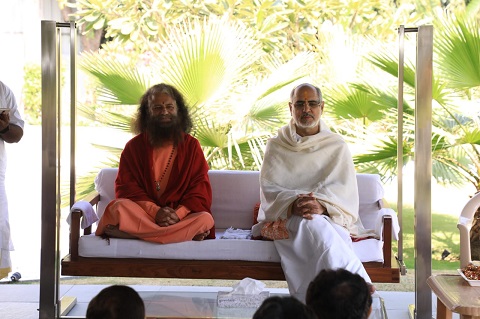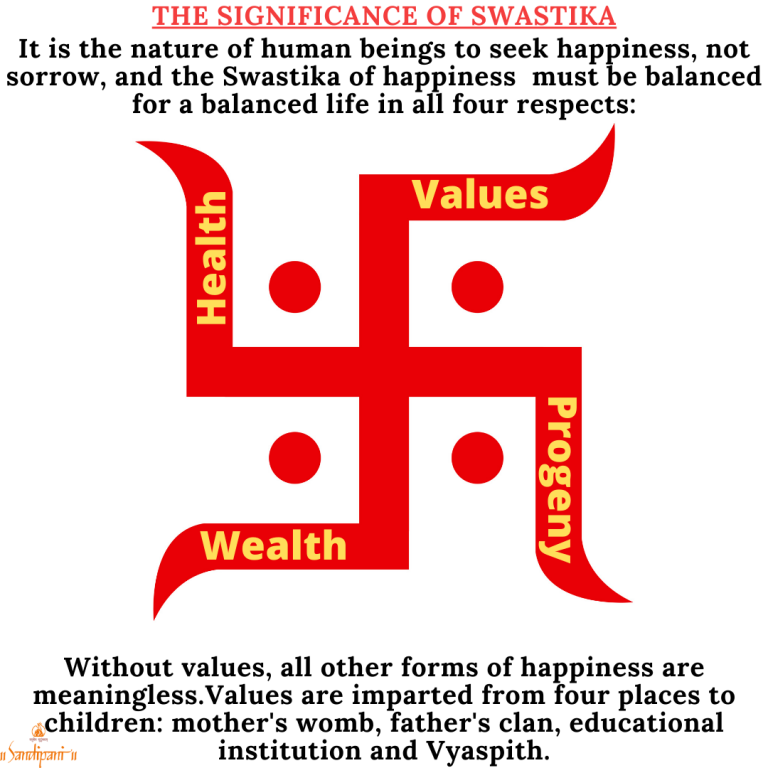The first day of Surat Bhagavat Katha by Pujya Bhaishri, named as ‘Shri Ram Krishna Bhagavat Pravah’ began on 5th January 2020 for eight days. This Katha has been impressively organised by the youth of Surat under the guidance of the elders. Watch video of the highlights of this Katha.
Shri Ram Krishna Bhagavat Pravah, Bhagavat Flows at Surat on Day 1

Pujya Bhaishri then created the foundation for this Katha based on the name it had been given by the youngsters of Surat, which he was pleased with.
Pujya Bhaishri said that we are like a lamp. Our body is made of earth just like the receptacle of the lamp. In this earthen body, we carry the oil of destiny and the wick of life. Our soul spreads light. This is life. Now all of us, the lamps in this universe, be it humans or other beings are being drawn in the flow of life. There is a difference between being drawn/strained and floating/swimming. Sometimes the lamps flowing in water, can overturn whilst some will float for a long time with the lamp alight.
We are all flowing but are we flowing in the material world or in spirituality and virtuousness? The Katha has been named Shri Ram Krishna Bhagavat Pravah’. One is flowing in the material world in which we are drawn, carried away and strained. We cannot control our self. We do not want to be drawn. We want to swim and to do so let us swim in the flow of Bhagavat.
This stage is the like the banks of a river. These are the banks of Vyasji and Shukdevji. Sometimes we see the banks of Tulsidasji and Valmikiji. From these banks we want to make the lamps swim in the flow of Bhagavat. I liked this name given to the Katha by the youngsters. We want to continue to swim in this flow of Bhagavat until we attain emancipation and unite with Supreme Light.
In Shrimad Bhagavat, when Mother Kunti performs prayer of Lord Krishna, the word bhav pravāh (flowing in the material world) is seen.
Śṛṇvanti gāyanti gṛṇanty abhīkṣṇaśaḥ, smaranti nandanti tavehitaṁ janāḥ
Ta eva paśyanty acireṇa tāvakaṁ, bhava-pravāhoparamaṁ padāmbujam SB 1.8.36
She says, “My dear Lord, one who hears or sings the Lord’s Katha, supports and compliments those who do so, quickly see (attain darshan of) the Lord’s lotus feet. These lotus feet cause the flow of this material world to recede.
In this flow of the material world (bhav pravāh) there are currents, tensions of the world and experience of deficiencies in one life. When they do not remain, only the flow of devotion to God remains.
Cautioning the Youth against getting carried away by the currents of the material world, he emphasised that an individual should not lose his own control over himself at any point.
The Swastika of Happiness
Pujya Bhaishri explained the significance of the sacred Swastika and its four arms in the evening worship of the doorway to welcome the Goddess of wealth (Lakshmi) with her footprints imprinted in the direction of entering the house.
Without values, all other forms of happiness are meaningless. There are four places from where these values are imparted to children. These are:
- Mother’s womb – A mother’s emotions and thoughts are imprinted upon a child’s mind right from the womb which is why it is imperative that she be connected to satsang and scriptures for healthy thoughts.
- Father’s clan- the family member’s inter-personal relationships and dealings impact a child as they learn more from what they see than what they are told.
- The educational institution and environment they are educated in should build character.
- Vyāspith– the seat of Dharma imparts the right thinking. Love for the Lord in the form of all and dispassion from a sense of ownership as one realises that everything, we possess does not belong to us but it is merely with us to be utilised appropriately.
One must love the poor but not poverty! It is well and good to aim for wealth. Dongreji Maharaj would say that wealth is a means but not the end. One should make efforts for it but not sin for it. It is a mistake to assume that spirituality means poverty. For householders, the combined spiritual and financial prosperity of a life with all four arms of the Swastika is priceless.
Pujya Bhaishri expressed his delight with the youth overall for their initiative in organising this Katha from inception to execution with a vast volunteer team aged 13 to 35 years. This inspires hope in the future of the fourth and most vital arm of the Swastika of happiness of good values. These must be cultivated from conception as they cannot be bought in a marketplace, otherwise, everyone wealthy would have ensured their children had them!
No amount of wealth can bring peace to parents whose children eat, do or go anywhere as they please, without the restraint of the right conduct to guide their choices.

